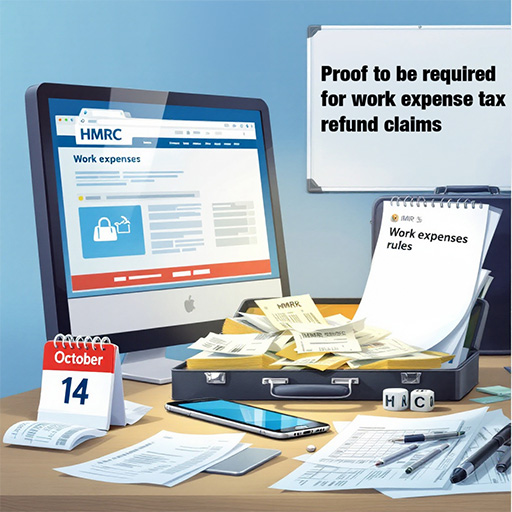In a significant move to combat ineligible tax expense claims, HM Revenue and Customs (HMRC) is introducing stringent new evidence requirements for Pay As You Earn (PAYE) employment expense claims. This follows earlier work to regulate tax refund services.
Set to take effect next week (from October 14, 2024), these changes will impact how millions of UK workers claim tax relief on their work expenses. Alongside this overhaul, HMRC has launched the "Don't Get Caught Out" campaign to educate taxpayers about the risks associated with making invalid claims and using third-party tax refund companies.
HMRC has identified a growing tax risk driven by ineligible claims for employment expenses. To address this issue, the Taxman suspended processing certain claims on earlier this Summer, while developing a new approach. The primary goal is to ensure that eligible customers receive their entitled tax relief while preventing ineligible payments.
HMRC state, "We want to make sure that customers get the tax relief they are entitled to in as straightforward a way as possible ... However, we also need to make sure that we identify where customers are not eligible and prevent them from receiving payments they are not entitled to.
Changes to the Claim Submission Process
From October 14, 2024, HMRC will implement significant changes to the PAYE employment expense claim process:
- Claimants must use a P87 form and provide supporting evidence to prove their eligibility.
- Digital form submissions and phone claims will no longer be accepted.
- Printed P87 forms must be submitted by post along with the required evidence.
For now this is quite an additional effort for people wanting a tax refund, but HMRC is working to bring in digital claim options.
For uniform, work clothing, and tool expenses, online claims will be available from October 31, 2024. For all other expenses, a digital claim route is 'expected' to go live by April 2025.
New Evidence Requirements
The big change with the new process is that it requires claimants to provide specific evidence based on the type of expense:
- Professional subscriptions: Receipts showing amounts paid.
- Mileage allowance: Detailed mileage log with reasons and postcodes.
- Hotel and meal expenses: Receipts with dates and establishment names.
- Working from home: Employment contract or explicit statement of requirement.
- Uniform, work clothing, and tool expenses (Flat Rate Expenses): No evidence required, but eligibility checks will be conducted.
Claimants must also specify the employment for which expenses were incurred and declare any reimbursements from their employer. Additionally, proof of tax payment in the year of the expense is required.
The "Don't Get Caught Out" Campaign
In conjunction with the new claim process, the "Don't Get Caught Out" campaign help raise awareness about the risks of submitting ineligible tax refund claims and using tax refund companies. The campaign website provides detailed help for potential tax refund claimants, stating:
- Check eligibility before claiming expenses.
- Be cautious of "hassle-free" offers to reduce tax bills.
- Understand that you're responsible for claims, even if made by an agent.
The campaign highlights several risks associated with using tax refund companies:
- High fees: Some companies keep around half of the refund amount as a charge.
- Potential identity theft: Sharing large amounts of personal information with unverified companies.
- Incorrect claims: Companies may submit inaccurate claims, leading to penalties for the taxpayer.
HMRC emphasizes that they do not endorse or work with tax refund companies and that individuals can claim tax relief for free through official channels.
For a number of years we have provided a secure and anonymous tax refund check and tax relief and expenses calculator to help taxpayers collate their work-related expenses and compile a free letter they can send to HMRC themselves. Now this will require an additional step of providing evidence, as detailed above.
Alternatively, HMRC sets out the tax refund route as follows:
- Use the free online tool on GOV.UK to check eligibility (15 minutes).
- Claim directly through GOV.UK using your Government Gateway account.
- For claims over £2,500, use the Self Assessment process.
- Gather and submit the required evidence as outlined in the new guidelines.
- Only claim for expenses used solely for work and not reimbursed by employers.
The new PAYE employment expense claim process is part of a broader strategy to improve tax compliance and reduce fraud. Other initiatives include:
- Changes to the R40 form for PPI claim tax repayments.
- Compliance projects for Self Assessment employment expense claims.
- Actions against dishonest tax agents, including arrests for suspected fraud.
- Collaboration with third parties to combat misleading advertisements.


